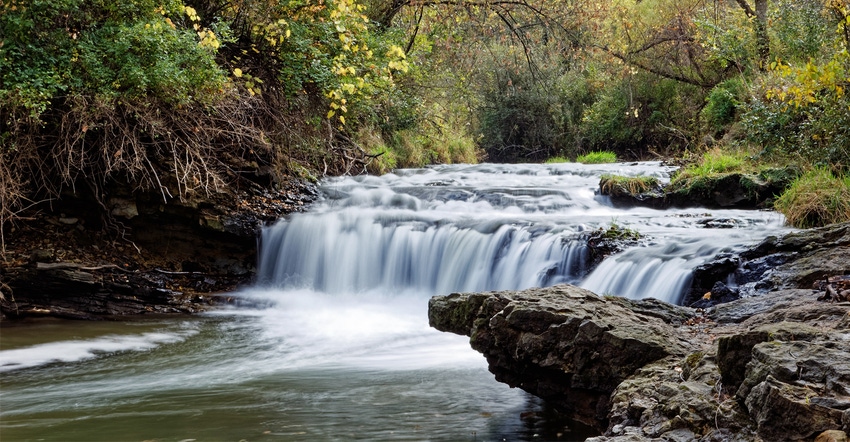December 17, 2020

Art and science are at the foundation of the Water Rocks program. Incorporating music, video, visual arts, movement and dance, the educators from Water Rocks grab the attention of young learners and help cement STEM lessons in their minds and, hopefully, their lives.
During the pandemic, many programs have successfully moved online or outdoors, and some exciting new virtual programs have been launched as well. Among them is the Water Rocks Spoken Earth virtual program for secondary students being readied for school groups in January.
Related: COVID-19 and conservation — what happened and what’s next
Delivered over Zoom, the program converges natural resource and conservation education topics, such as biodiversity, with the creativity enabled through original “spoken word” poetry. Water Rocks Spoken Earth was first presented in early December as a part of the Science Bound program at Iowa State University. As a guest STEM presentation for the participants, Water Rocks worked with 105 eighth graders from multiple Iowa schools.
Teaching through spoken word
The program is structured to:
introduce the spoken word art form
teach a science-based lesson attuned to the audience grade level and curriculum needs
facilitate an interactive creative segment where students can transform their thoughts about a topic into a spoken performance
Teaching and facilitating the spoken word parts of the program, Water Rocks music and outreach specialist Todd Stevens hopes to help the students find a new means of expression and build the confidence to share. “After we've worked with the students on brainstorming and collecting their ideas and thoughts, we nudge them along to put things together and even share vocally with the group,” Stevens says. “It was truly amazing what some of these young people came up with and performed in the short time we were with them.”
Stevens says “spoken word” is a well-known art form that has become very popular in recent years, but dates back over a century, harkening back to jazz and bebop of the 1930s, ’40s and ’50s, beat poetry of the 1960s, punk rock in the ’70s and ’80s, and rap, which is still prevalent today. While not required, spoken word is often accompanied by music, but does not necessarily rely on the musical rhythms or traditional poetic structures such as rhyming or specific syllabic phrasing.
“Spoken word has deep roots and has sustained and evolved throughout the years because it provides a means to speak truth and express profound passion and feelings,” Stevens says. “The recent explosion of spoken word is evidence of many people feeling freer to advocate for a cause, call out issues or even celebrate. This is poetry performed, and done so in a way that empowers people to present their poetry with passion, with gestures and intonations, with attitude — ultimately with their whole being.”
Water Rocks Spoken Earth grew out of a workshop for teachers that demonstrated how rap could be used to help teach science in ways that are memorable and relevant to students.
“Water Rocks has used rap in multiple videos and teaching tools, so the evolution to spoken word is a natural step,” says Ann Staudt, Water Rocks director. “Empowering young people to confidently share their ideas and concerns about the environment and the world that surrounds us is a tremendous way to help affect generational change in attitudes toward the natural world.”
Opening a doorway
During the initial workshop, five students turned on their camera and microphone to perform their original spoken word poem about biodiversity. An additional 18 submitted their written poems for feedback from Stevens.
“This workshop opens a doorway for students and encourages exploration through application of an art form that allows them to express their ideas and passions about science that affects their lives,” Staudt says. “Being restricted from visiting schools this year has enabled our team to create this very complementary program, which we hope will provide young people with a tool to advocate and change the world through expressing their thoughts and feelings about the environment.”
The program is available to Iowa secondary schools free of charge throughout the spring semester. Teachers and administrators interested in learning more or booking Water Rocks Spoken Earth for spring semester should visit waterrocks.org
Pierce is an Iowa State University Extension program specialist with a focus on water quality with Iowa Learning Farms and Water Rocks.
Read more about:
YouthYou May Also Like




